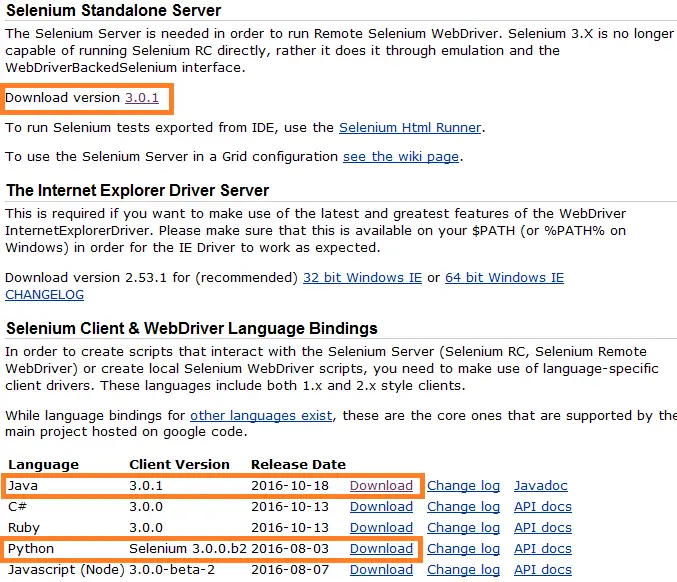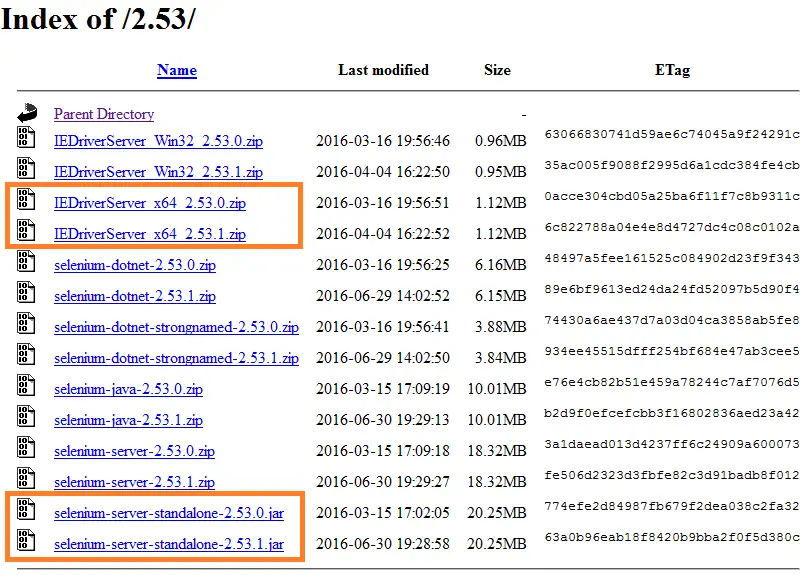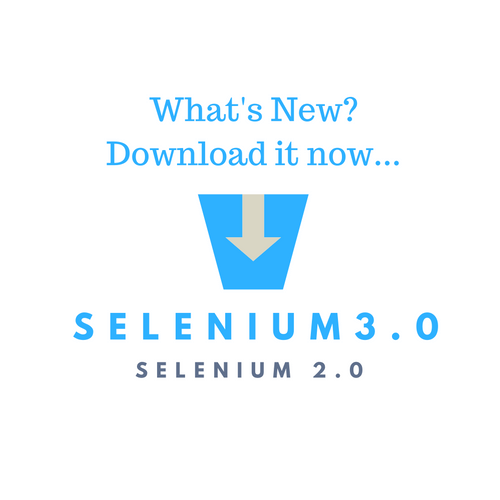Selenium Webdriver is continuously evolving and advancing its features. Recently, we’ve seen a few beta versions of Selenium Webdriver 3.0, followed by its official release. In this post, we’ll share the stable Selenium Webdriver download links with you.
Introduction
Please know that Selenium, as a product, is passing through a fundamental shift. So every test automation developer using Selenium should be aware of the changes in the new versions. And that’s why we are writing this post to acquaint you with the recent trends in Selenium.
Here, we’ll provide you with the latest Selenium Webdriver download links which will lead you to the most stable releases and will share updates on the new features.
Next, we have only included the links for the core Selenium Webdriver components like the Standalone Webdriver and the drivers for browsers like Firefox, Chrome, IE, and Safari. So, you can focus on the modules that are pertinent to your automation development.
With every Selenium Webdriver download link, we’ve attached a list of essential features to describe the purpose of the module that you would like to download.
In addition to the above stuff, you’ll see links to some of the best Selenium Webdriver tutorials on our blog that you can refer to for help in installing, configuring, and creating test automation projects using tools like Eclipse and Maven.
But before you go further, let’s hear a few historical facts about this excellent test automation tool.
#1. It was Jason Huggins, who began working on Selenium core in 2004.
#2. Selenium RC came into existence in 2006.
#3. Selenium 2.0 (Webdriver support) replaced RC in 2011.
#4. Selenium 3.0 was birthed in Oct 2016.
Selenium Webdriver Download – Official Releases.
Finally, we’ve seen the official release of Selenium 3.0 after getting through the four beta versions. The developers have done a great job in delivering the latest of Selenium Webdriver.
So let’s start with the most recent release of the Selenium Webdriver, which is version 3.0. There are a lot of new features introduced in this release. It mainly focused on alienating the core API from the client driver implementation.
Below, we’ve broadly covered the fundamental changes made to the Selenium Webdriver 3.0.
Table of Index
1. Get to Know Selenium 3 Changes
2. Download Selenium 3
3. Download Latest Geckodriver
4. Download Selenium 2 (Old stable release)
What’s new in Selenium 3.0?
1. The core Selenium Webdriver API will work as an interface. Browser vendors will independently provide client drivers.
Even Firefox now has its GECKO driver implementation of the Webdriver 3.0 APIs. GECKO driver follows the W3C WebDriver spec. You can find the latest API specifications here.
2. Support for Safari is available via Apple’s Safari driver.
And for IE, it is the Edge driver that integrates with the Selenium Webdriver.
3. Some other changes are as follows.
- The minimum JRE version is 8.0.
- Supported IE version is >= 9.0.
- Brought back support of Firefox 47.0.1 and earlier versions
- For the newer Firefox version, use the GECKO driver.
There are a few other changes which you can find from the changelogs.

Download Selenium 3.0 (Webdriver)
| Module Name | Module Description | Download Links |
|---|---|---|
|
|
|
| 2. Selenium Java Binding (3.0.1) 3. Selenium Python Binding (3.0.0) |
|
|
| 4. IE Server Driver (2.53.1) |
|
|
| 5. GECKO Driver (Latest) |
|
|
| 6. Google Chrome Driver (Latest) |
|
|
Download Selenium 2.0 (Webdriver)
Since many of the test automation developers are still using the Selenium Webdriver 2.0, it’s relevant to provide its related download links. Hence, we are sharing the most stable version that QA professionals across the IT industry can use to develop test automation artifacts.
To download Selenium Webdriver 2.0 packages, click on the below blue button.

Selenium Webdriver Tutorials to Read
Finally, we are listing down some of the handy posts that thousands of our readers have read and could be equally useful for you as well.
Suggested Posts for Quick Reference
To get started with Selenium WebDriver, the first thing you should do is go through the following tutorials.
- Create Your First Selenium Webdriver Project in Eclipse from Scratch
- Create Selenium Webdriver Project Using Maven in 10 Minutes
- Setup a Selenium TestNG Project Using Maven and Eclipse
- Download and Setup Selenium IDE for Web Testing
Footnote – Selenium Webdriver Download
Hopefully, you’ve enjoyed staying here and found something useful to create innovative automation solutions. Please let us know how can we improve further to serve you better.
Also, if you liked this post, then please share it on social media to let others be aware of Selenium 3.
All the Best,
TechBeamers









